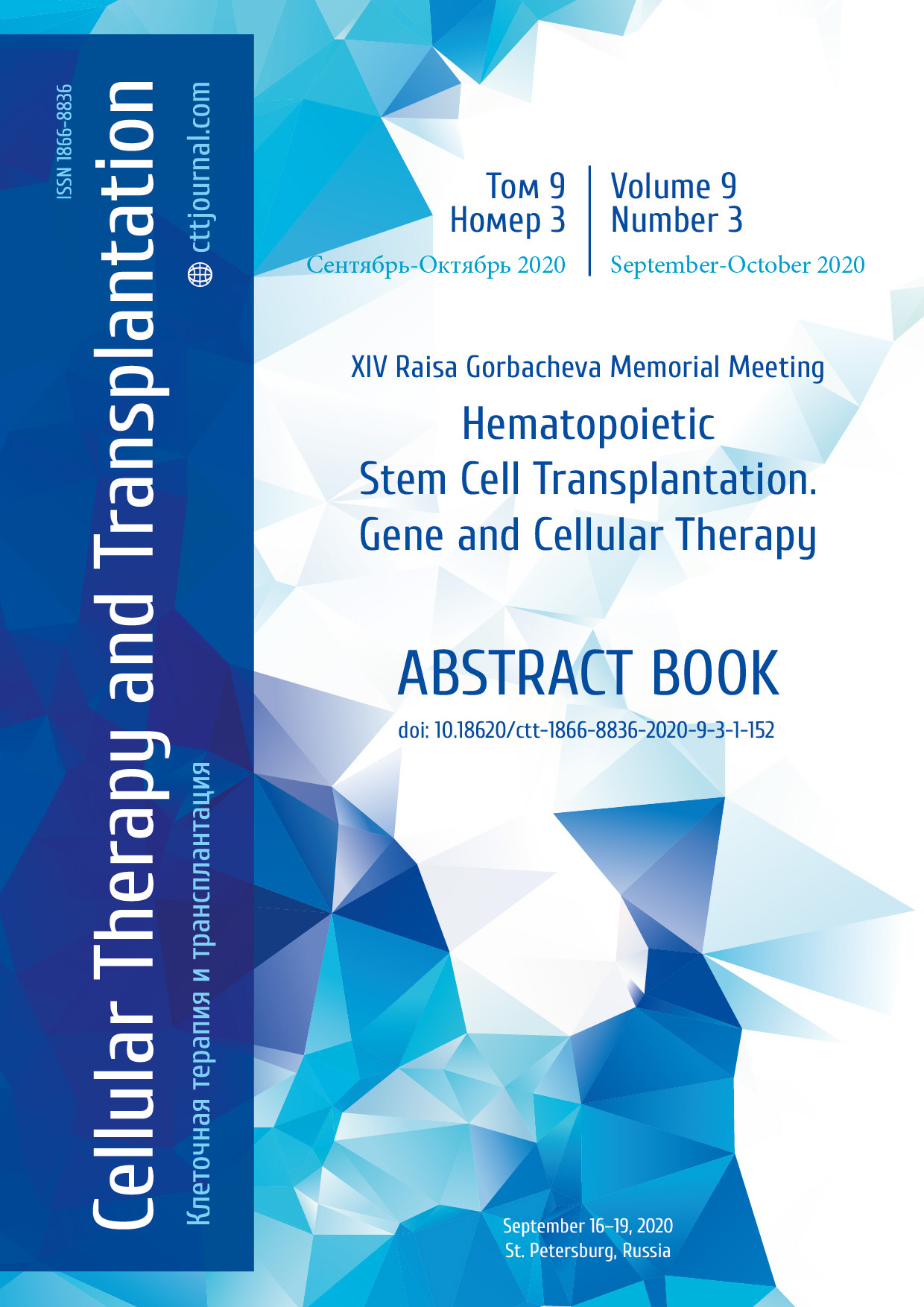AL-07. Donor lymphocyte Infusion for the prevention and treatment of acute leukemia relapse after allogeneic hematopoietic stem cell transplantation in adults
Anna G. Smirnova, Sergey N. Bondarenko, Ivan S. Moiseev, Bella I. Ayubova, Elena V. Babenko, Ildar M. Barkhatov, Alexander D. Kulagin, Boris V. Afanasyev
RM Gorbacheva Research Institute of Pediatric Oncology, Hematology and Transplantation, Pavlov University, St. Petersburg, Russia
Contact: Dr. Anna Smirnova, e-mail: dr.annasmirnova@gmail.com
Summary
Introduction
Donor lymphocyte infusion (DLI) is one of the options for treating relapse of acute leukemia after allogeneic hematopoietic stem cell transplantation (allo-HSCT), regardless of the type of leukemia, donor type and the period after allo-HSCT. The advantages of DLI include the option of varying the lymphocyte dosage, and a combination with chemotherapy (ChT) and targeted therapy (TT). The main limiting factor for DLI is a risk of severe induced GVHD after DLI (indGVHD). The aim of this study was to assess efficacy and safety of DLI depending on the indications, type of donor and the dosage of lymphocytes.
Patients and methods
From April 2012 to November 2019, 142 DLIs were performed in 66 patient (males, 36; females, 30). Their age ranged from 18 to 52 (median 33 y.o.). Diagnosis at the time of allo-HSCT: ALL, 22 patients, AML, 44 patients. Indications for DLI were as follows: mixed donor chimerism in 12 cases, residual tumor clone detected by PCR or FC in 13 cases, and relapse in 41 cases (33, bone marrow; 8, extramedullary relapses). After chemotherapy (ChT), DLI was performed in 33 patients, including nine in the period of cytopenia (ChT, 23; ChT + targeted drugs, 10). The median initial dose of DLI for allo-HSCT from a matched donor was 0.7×106/kg in remission, and 1.4×106/kg in relapse. The median follow-up period was 28 months.
Results
In the group of patients without a history of GVHD (n=50), the incidence of indGVHD was 12%. 83% of these patients received systemic immunosuppressive therapy (IST). Non-relapse mortality (NRM) in the cases with indGVHD was 17%. After a history of aGVHD (n=16), indGVHD occurred in 44%, of which 43% received IST, NRM rate with indGVHD was 29%. After cGVHD (n=12), the incidence of indGVHD was 25%, no therapy was required. The median initial dose of DLI in cases with aGVHD or cGVHD history was 1×106/kg, and 1.2×106/kg without GVHD. Overall survival (OS) and relapse-free survival (RFS) rates after DLI in remission were 41% and 24%, respectively, and after relapse 25% and 0% (p=0.5). OS after DLI in patients without aGVHD history was 42%, with aGVHD, 13% (p=0.07). After relapse followed by DLI, OS was higher when targeted drugs were used, i.e., 70% versus 16% (p=0.01). The history of cGVHD and indGVHD, donor type, DLI in cytopenia did not affect OS and RFS.
Conclusion
The incidence of DLI-induced GVHD and NRM is higher in patients with a history of aGVHD. A history of aGVHD is a factor of poor prognosis in cases of relapse. The administration of targeted therapy after relapse increases OS. The necessity for DLI in this case requires further studies.
Keywords
Donor lymphocyte infusion, acute leukemia, relapse.


